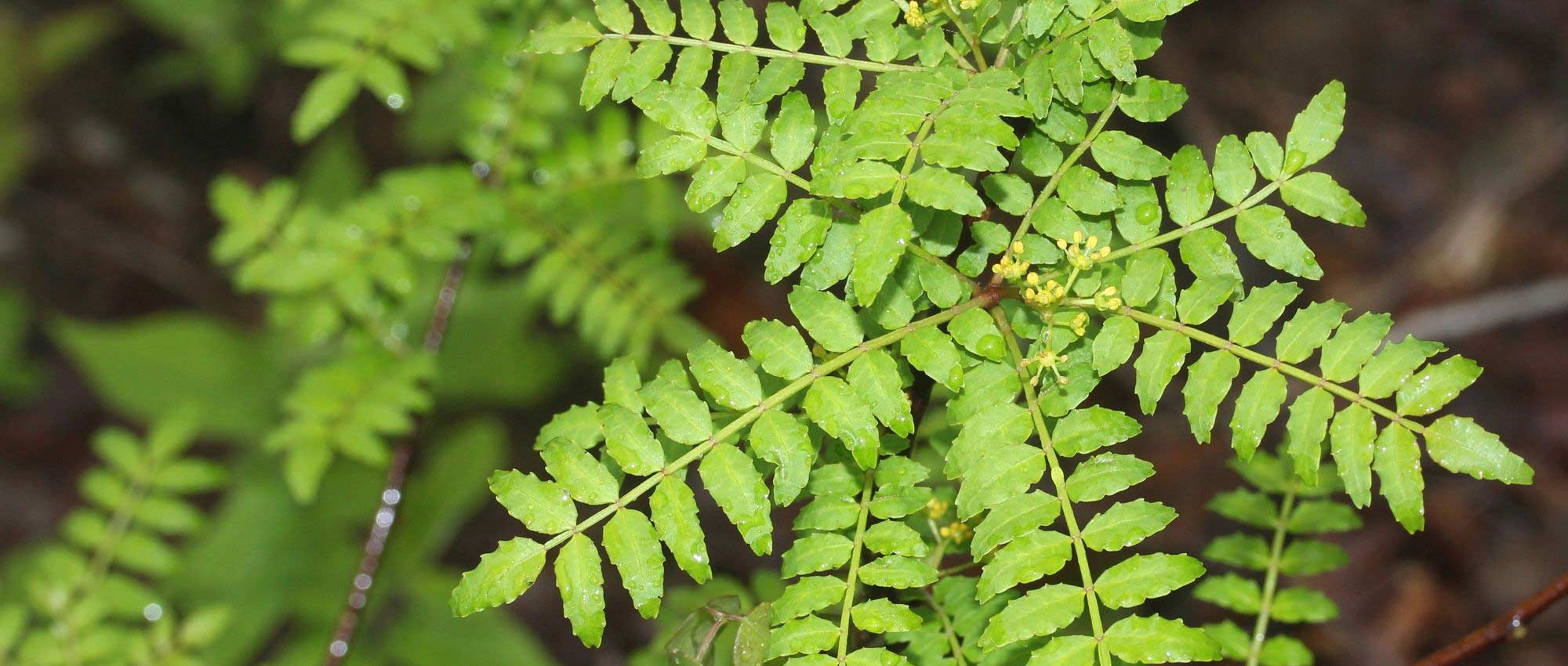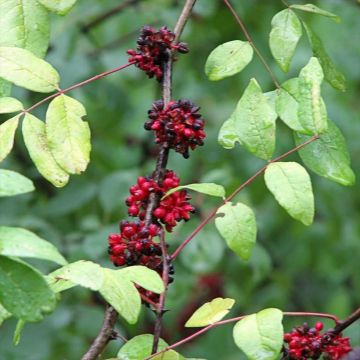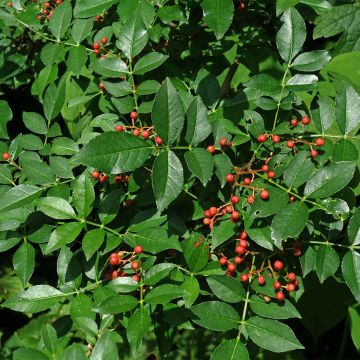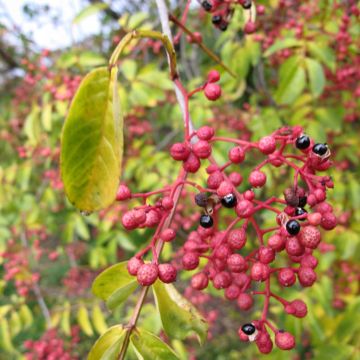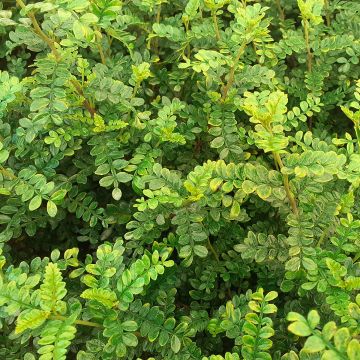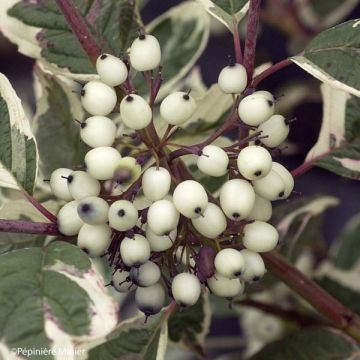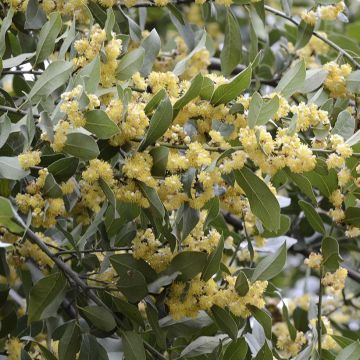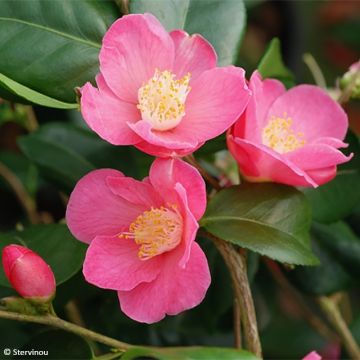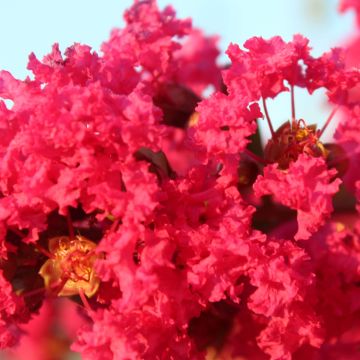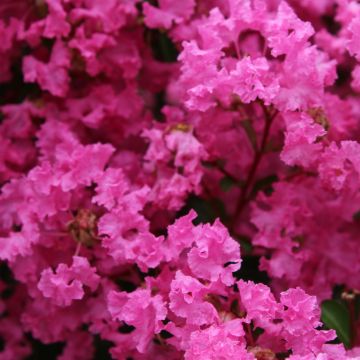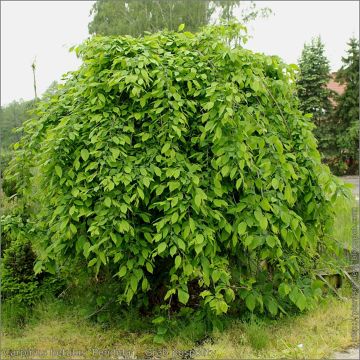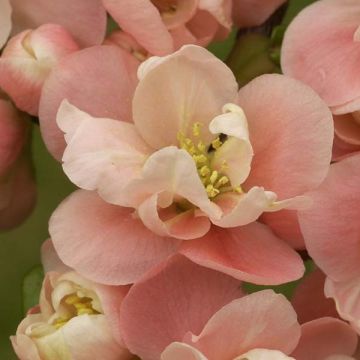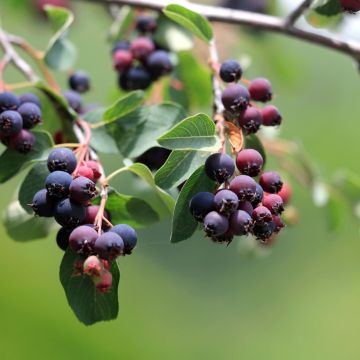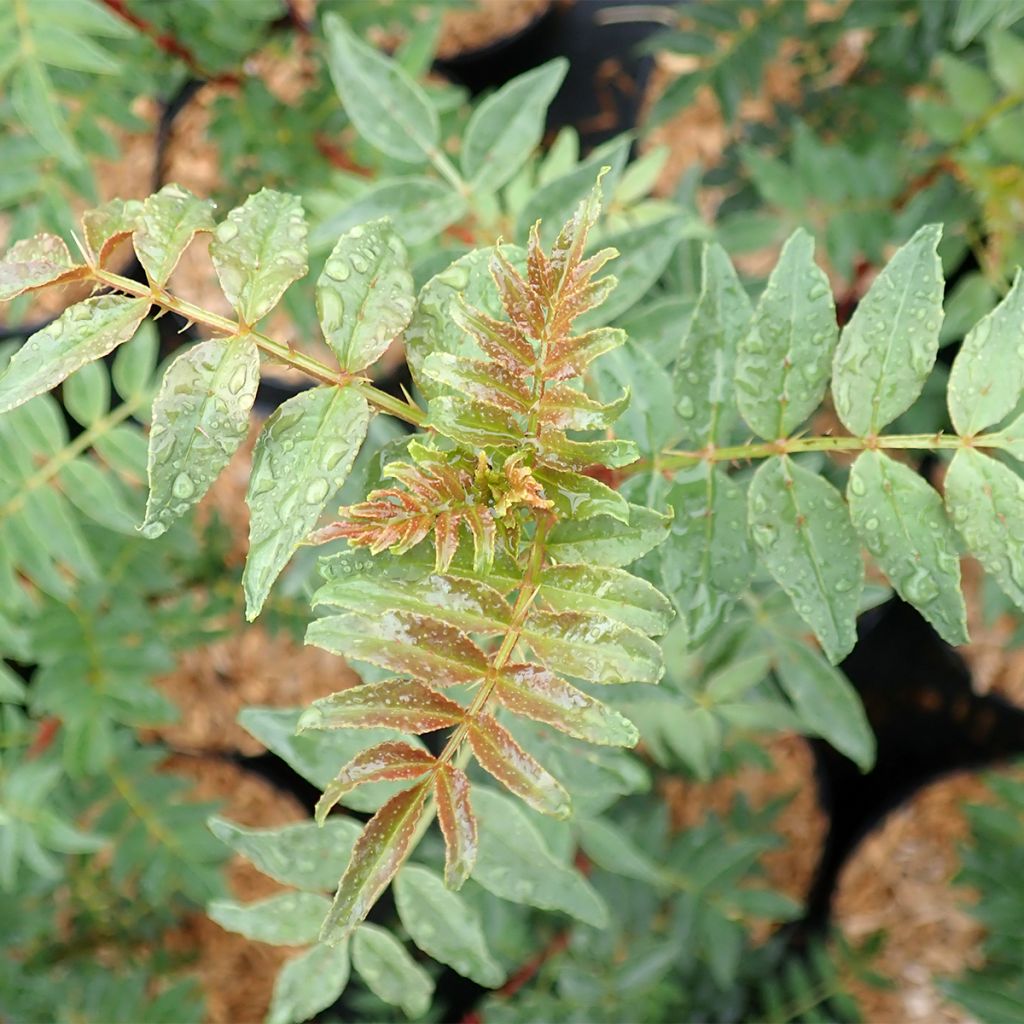

Zanthoxylum schinifolium - Poivrier de Sansho
Zanthoxylum schinifolium
Zanthoxylum schinifolium
Sichuan Pepper, Chinese Pepper, Chinese Prickly-ash
The Sancho Pepper Tree received in good shape, well packaged and already planted in the garden a few weeks ago, it looks healthy, looking forward to the future first harvests in a few years. Thank you very much Promesse de Fleurs, you are always top-notch, both for the quality of your plants and your telephone customer service, which is always helpful and also very friendly. Best regards
Robinson , 23/09/2024
Special offer!
Receive a €20 voucher for any order over €90 (excluding delivery costs, credit notes, and plastic-free options)!
1- Add your favorite plants to your cart.
2- Once you have reached €90, confirm your order (you can even choose the delivery date!).
3- As soon as your order is shipped, you will receive an email containing your voucher code, valid for 3 months (90 days).
Your voucher is unique and can only be used once, for any order with a minimum value of €20, excluding delivery costs.
Can be combined with other current offers, non-divisible and non-refundable.
Home or relay delivery (depending on size and destination)
Schedule delivery date,
and select date in basket
This plant carries a 24 months recovery warranty
More information
We guarantee the quality of our plants for a full growing cycle, and will replace at our expense any plant that fails to recover under normal climatic and planting conditions.

Would this plant suit my garden?
Set up your Plantfit profile →
Description
The Zanthoxylum schinifolium, sometimes called the Sansho pepper bush, is part of a group of small Asian trees called pepper bushes, known for their aromatic fruits used in cooking as Sichuan pepper. This Korean and Japanese species, schinifolium, is traditionally cultivated in Japan for the skin of its berries, which have fresh citrus and lemongrass aromas and give remarkable flavours to local cuisine. This pepper bush is also attractive for its easy cultivation, its beautiful finely cut foliage, and its peculiar rough bark on old specimens. Small berries follow discreet summer flowers, the dried and ground husk used as a spice. It finds its place in a free hedge, and its thorny young branches work wonders in a defensive hedge. For this reason, it is best to place it far from a walkway and wear gloves for harvesting!
Native to eastern China, Korea, and Japan, the Zanthoxylum schinifolium belongs to the same family as citrus trees, the Rutaceae family, with which it shares a very aromatic foliage. It loses its leaves in winter, tolerates occasional temperatures down to -18°C, and grows in any well-drained and sufficiently deep soil. However, young plants are more sensitive to cold.
This small tree, which grows rapidly in fresh and fertile soil, measures an average of 3.50 m (11ft) in height with a spread of about 3 m (10ft) at maturity. It has a graceful, naturally spreading habit supported by flexible branches. This species develops one or more trunks topped with a rounded, semi-open crown. The trunk and branches are adorned with strong thorns that widen and flatten significantly over the years while their tips become blunt. The branches bear deciduous leaves arranged alternately, divided into 11 to 21-toothed leaflets, producing essential oils and fine prickles. When crushed, they release a lemony and slightly peppery scent. Their colour is a beautiful dark green, turning yellow in autumn before falling off. Flowering occurs in July-August, depending on the climate, on one-year-old branches. It consists of small compact clusters or cymes composed of small flowers with a brownish-green colour. This shrub has both male and female flowers. After pollination, slightly flattened fruits, 3 to 4 mm (1in) in diameter, form on the female flowers. The fruit is green when ripe, opening to reveal black and shiny seeds. Only the husk is consumed once dried and ground. Since ancient times, Sansho pepper has been used as a natural preservative for meat and fish.
In the kitchen:
The berries of this Sansho pepper bush should not be confused with "pink berries" or "pink pepper" sold in the spice section: the latter are produced by another small tree called Schinus terebinthifolius, the Brazilian pepper tree, native to South America. In cooking, we will use the green "skin" of the fruits of our Zanthoxylum to enhance preserves, rice, salads, and cooked dishes. This spice is essential in traditional Asian cuisine. The dried and powdered leaves are also used, especially in Japan: their aroma is very similar to that of the berries.
In the garden:
This unusual small tree has its charm in an English or naturalistic garden. If you plant this on its own, it can look stunning and surprise your guests. To show off its trunk, trim the lowest branches up to 1 metre (3 feet) from the ground. Left untrimmed, it naturally finds its place in an untrimmed hedge alongside dogwoods, rowans, viburnums, Osage orange, apple trees, and ornamental cherries, bee trees, for example. The thorny nature of its young branches makes this beautiful shrub an ideal candidate for a defensive hedge. Pair it with Poncirus trifoliata, Rosa moyesii, Pyracantha, hawthorn, Japanese quince Cido, or sea buckthorn.
Zanthoxylum schinifolium in pictures
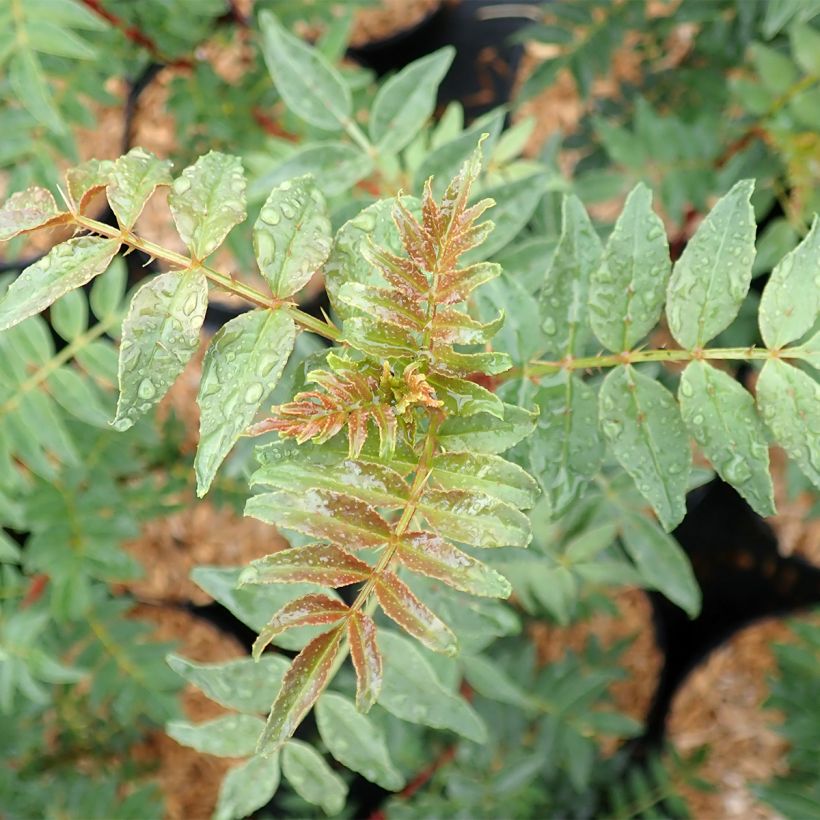

Plant habit
Flowering
Foliage
Botanical data
Zanthoxylum
schinifolium
Rutaceae
Sichuan Pepper, Chinese Pepper, Chinese Prickly-ash
Southeast Asia
Other Zanthoxylum - Prickly Ash
View all →Planting and care
When planting the Sansho pepper tree, it's best to plant it in the spring in a cooler climate or early autumn if you live in a drier and warmer climate. Choose a location sheltered from cold and dry winds, as they can harm young shoots. For the tree to thrive, it requires deep, loose, fertile, and well-draining soils with some tolerance for limestone. A sunny or semi-shaded location is best, but too much shade can prevent the tree from flowering and fruiting. If the soil remains slightly moist during summer, the tree's growth is rapid. Once established, the tree can survive without water in the summer in most regions after three years of cultivation. It is resistant to -18°C (1°F), but it is more susceptible to cold during its early years, especially if the soil is heavy and wet. In such cases, lightening your garden soil with river sand, gravel, or pumice can help. In cold regions, young plants should be protected with horticultural fleece, and the base should be mulched.
The Japanese pepper tree is easy to cultivate and requires little maintenance. If you want to grow a free-standing hedge, plant one tree every metre. If pruning is necessary, it should be done in autumn, but this may sacrifice the following spring flowering.
Planting period
Intended location
Care
Planting & care advice
-
, onOrder confirmed
Reply from on Promesse de fleurs
Similar products
Haven't found what you were looking for?
Hardiness is the lowest winter temperature a plant can endure without suffering serious damage or even dying. However, hardiness is affected by location (a sheltered area, such as a patio), protection (winter cover) and soil type (hardiness is improved by well-drained soil).

Photo Sharing Terms & Conditions
In order to encourage gardeners to interact and share their experiences, Promesse de fleurs offers various media enabling content to be uploaded onto its Site - in particular via the ‘Photo sharing’ module.
The User agrees to refrain from:
- Posting any content that is illegal, prejudicial, insulting, racist, inciteful to hatred, revisionist, contrary to public decency, that infringes on privacy or on the privacy rights of third parties, in particular the publicity rights of persons and goods, intellectual property rights, or the right to privacy.
- Submitting content on behalf of a third party;
- Impersonate the identity of a third party and/or publish any personal information about a third party;
In general, the User undertakes to refrain from any unethical behaviour.
All Content (in particular text, comments, files, images, photos, videos, creative works, etc.), which may be subject to property or intellectual property rights, image or other private rights, shall remain the property of the User, subject to the limited rights granted by the terms of the licence granted by Promesse de fleurs as stated below. Users are at liberty to publish or not to publish such Content on the Site, notably via the ‘Photo Sharing’ facility, and accept that this Content shall be made public and freely accessible, notably on the Internet.
Users further acknowledge, undertake to have ,and guarantee that they hold all necessary rights and permissions to publish such material on the Site, in particular with regard to the legislation in force pertaining to any privacy, property, intellectual property, image, or contractual rights, or rights of any other nature. By publishing such Content on the Site, Users acknowledge accepting full liability as publishers of the Content within the meaning of the law, and grant Promesse de fleurs, free of charge, an inclusive, worldwide licence for the said Content for the entire duration of its publication, including all reproduction, representation, up/downloading, displaying, performing, transmission, and storage rights.
Users also grant permission for their name to be linked to the Content and accept that this link may not always be made available.
By engaging in posting material, Users consent to their Content becoming automatically accessible on the Internet, in particular on other sites and/or blogs and/or web pages of the Promesse de fleurs site, including in particular social pages and the Promesse de fleurs catalogue.
Users may secure the removal of entrusted content free of charge by issuing a simple request via our contact form.
The flowering period indicated on our website applies to countries and regions located in USDA zone 8 (France, the United Kingdom, Ireland, the Netherlands, etc.)
It will vary according to where you live:
- In zones 9 to 10 (Italy, Spain, Greece, etc.), flowering will occur about 2 to 4 weeks earlier.
- In zones 6 to 7 (Germany, Poland, Slovenia, and lower mountainous regions), flowering will be delayed by 2 to 3 weeks.
- In zone 5 (Central Europe, Scandinavia), blooming will be delayed by 3 to 5 weeks.
In temperate climates, pruning of spring-flowering shrubs (forsythia, spireas, etc.) should be done just after flowering.
Pruning of summer-flowering shrubs (Indian Lilac, Perovskia, etc.) can be done in winter or spring.
In cold regions as well as with frost-sensitive plants, avoid pruning too early when severe frosts may still occur.
The planting period indicated on our website applies to countries and regions located in USDA zone 8 (France, United Kingdom, Ireland, Netherlands).
It will vary according to where you live:
- In Mediterranean zones (Marseille, Madrid, Milan, etc.), autumn and winter are the best planting periods.
- In continental zones (Strasbourg, Munich, Vienna, etc.), delay planting by 2 to 3 weeks in spring and bring it forward by 2 to 4 weeks in autumn.
- In mountainous regions (the Alps, Pyrenees, Carpathians, etc.), it is best to plant in late spring (May-June) or late summer (August-September).
The harvesting period indicated on our website applies to countries and regions in USDA zone 8 (France, England, Ireland, the Netherlands).
In colder areas (Scandinavia, Poland, Austria...) fruit and vegetable harvests are likely to be delayed by 3-4 weeks.
In warmer areas (Italy, Spain, Greece, etc.), harvesting will probably take place earlier, depending on weather conditions.
The sowing periods indicated on our website apply to countries and regions within USDA Zone 8 (France, UK, Ireland, Netherlands).
In colder areas (Scandinavia, Poland, Austria...), delay any outdoor sowing by 3-4 weeks, or sow under glass.
In warmer climes (Italy, Spain, Greece, etc.), bring outdoor sowing forward by a few weeks.






























